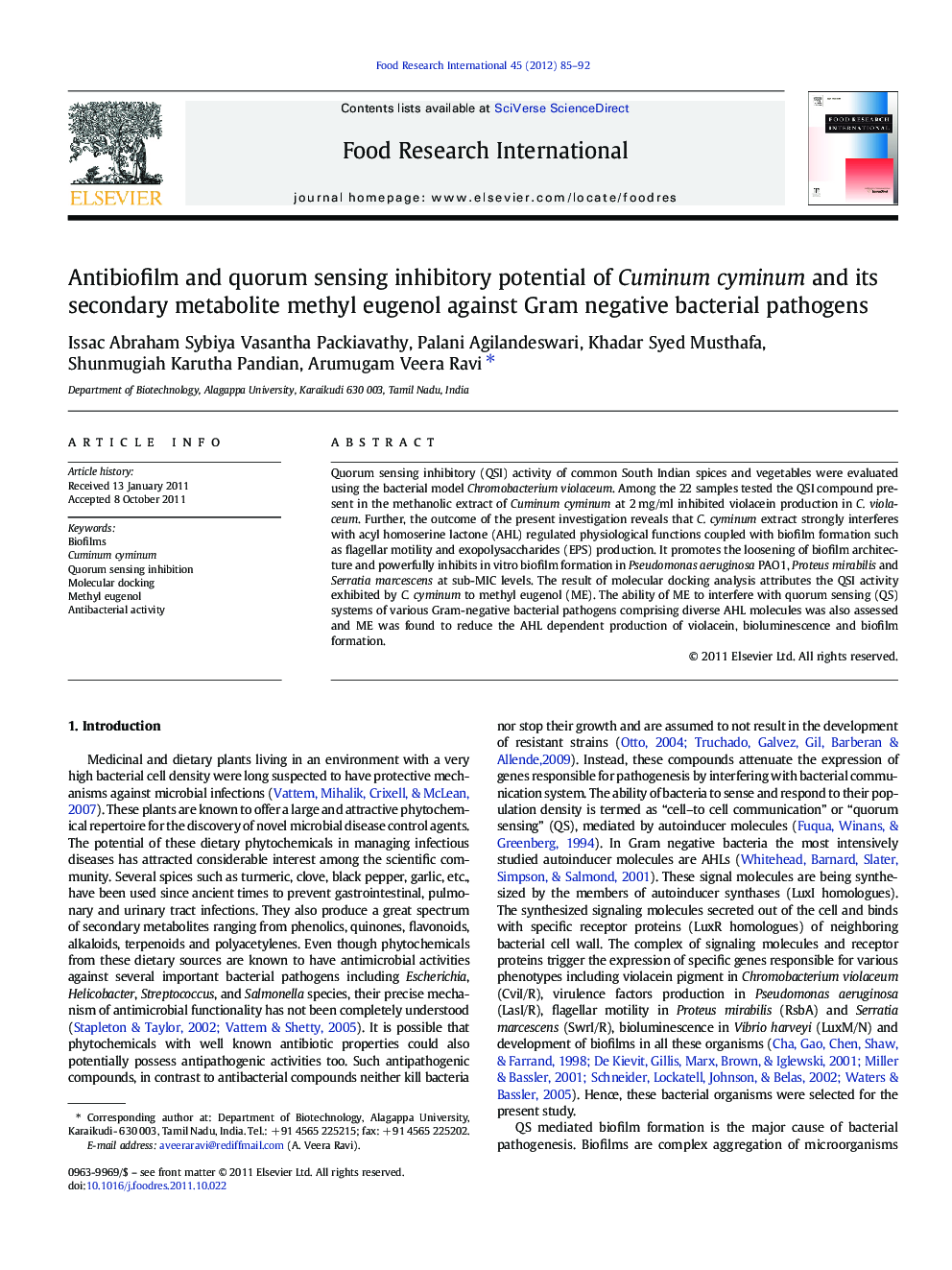| Article ID | Journal | Published Year | Pages | File Type |
|---|---|---|---|---|
| 6399347 | Food Research International | 2012 | 8 Pages |
Quorum sensing inhibitory (QSI) activity of common South Indian spices and vegetables were evaluated using the bacterial model Chromobacterium violaceum. Among the 22 samples tested the QSI compound present in the methanolic extract of Cuminum cyminum at 2Â mg/ml inhibited violacein production in C. violaceum. Further, the outcome of the present investigation reveals that C. cyminum extract strongly interferes with acyl homoserine lactone (AHL) regulated physiological functions coupled with biofilm formation such as flagellar motility and exopolysaccharides (EPS) production. It promotes the loosening of biofilm architecture and powerfully inhibits in vitro biofilm formation in Pseudomonas aeruginosa PAO1, Proteus mirabilis and Serratia marcescens at sub-MIC levels. The result of molecular docking analysis attributes the QSI activity exhibited by C. cyminum to methyl eugenol (ME). The ability of ME to interfere with quorum sensing (QS) systems of various Gram-negative bacterial pathogens comprising diverse AHL molecules was also assessed and ME was found to reduce the AHL dependent production of violacein, bioluminescence and biofilm formation.
⺠Cuminum cyminum inhibits quorum sensing mechanisms in G-ve bacterial pathogens. ⺠Molecular docking analysis attributed QSI activity to methyl eugenol in C. cyminum. ⺠Experimental analysis also confirms the QSI activity of methyl eugenol.
